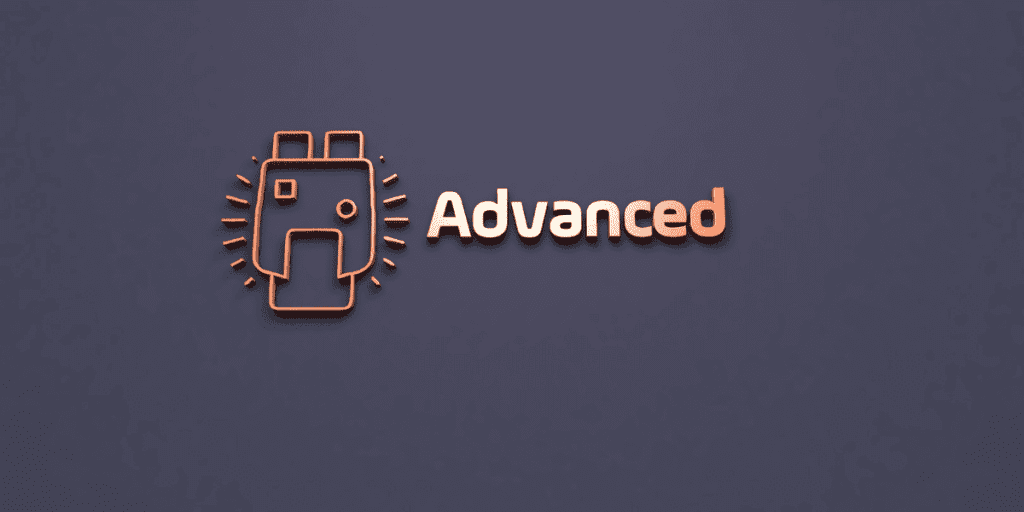For advanced chess players, i recommend these 5 book that have helped me in improving my game.
These 5 chess books for advanced players are part of Grandmaster preparation series by Jacob Aagaard.
Here is brief summary of what you will learn after reading these books.
First book teaches you attack and defense in chess.
Second book is about strategic play where you will learn about creating and executing strategical plans.
Third book is designed to improve your calculation skills which will be useful in all three phases of the game.
Fourth book is completely different than most chess books because this book is about your thought process. This book teaches you to improve your thought process in a real game.
Fifth book will make you a better endgame player.
Let’s look at these books in more detail…
1. Attack and Defense

Author: Jacob Aagaard
Top ideas that i learned from this book are:
Include all the pieces in the attack:
So many times, you start an attack without proper preparation and it fails.
You take your queen, knight and jump on the opponent’s king. These kind of attack easily gets repelled.
If you prepare the attack thoroughly and try to bring all the pieces in the attack then your chances of success attack are much higher.
Momentum:
Once you start the attack, it is important to keep the momentum otherwise opponent may get a chance to strengthen his defense.
Most of the time, sacrifice material is the best way to keep the momentum.
Colour theory:
I found this concept useful in my practical games.
Mostly, we are attacking on a particular colour complex. Example: in dragon variation of sicilian defense, white tries to exchange the dark squared bishop and attack on the dark squares.
Quantity beats quality:
If you have many pieces in one part of the board then you can sacrifice one or more piece to create weakness in opponent’s territory and use rest of your pieces to continue the attack.
Example: in king’s indian attack, white plays Nbd2-f1-h2-g4 Maneuver and brings most of his pieces on the kingside to attack on black’s king.
Now look at the defense part:
Prophylaxis: It means identifying opponent’s strong ideas and preparing a plan to reduce the impact of their ideas.
When you are defending, you have to anticipate multiple attacking possibilities of your opponent and come up with a plan to deal with every possibility.
That’s why defense is difficult than attack.
Active defense:
Instead of putting your pieces on the back ranks and keeping them passive, it is better to sacrifice some material and play for an active defense.
In practical games, playing an active position is much easier than playing a passive position.
Even when you are on the defense, you should try to keep your pieces active and look for a potential counter play because as the saying goes ” Attack is the best defense.”
Conclusion: This book covers the topic of attack and defense in depth.
2. Strategic Play

Author: Jacob Aagaard
As your strength increases, you will face stronger opponents who will not make easy tactical mistakes.
You will have to outplay them with your better strategical decisions.
This book is divided in 5 chapters.
Chapter 1: Squares
What is a weak square?
Weak square is a square in opponent’s territory which cannot be controlled by opponent’s pawn.
Why weak squares are important?
If you can identify a weak square and put one of your pieces there, then your piece cannot be chased away easily. It gives you positional advantage.
In this square, you will learn to identify weak squares and exploit them to your advantage.
Chapter 2: Pieces
Well, identifying a weak square is only the first part. Then, you have to decided which is piece is best for that square.
Example: If a weak square is in the center of the board then most of the time knight will ideally placed there as knight’s power increases when you move them toward the center.
If there are no weak squares and you ask yourself ” What is my worst placed piece? ”
You identify your worst placed piece and improve its position.
Chapter 3: Prophylaxis
We covered this topic in first book “Attack and defense” also and now we are covering it again.
Why?
Because this topic is so important.
In the first book, prophylaxis was taught in relation to defense. Now, you will learn it in strategical positions.
Chapter 4: Dynamics
Strategy is not always about static features of position.
Identifying and using the dynamic potential of your position is a also a strategy.
In dynamics position, you cannot rely on general principles alone; you need to calculate deeper and efficiently which you will learn in next book.
Chapter 5: Fighting the tide
Many times you find yourself on the wrong side of the position.
When your opponent has static advantage and you are forced to defend then one other way is to fight the tide: Sacrificing material or going in complicated position where you are still worse but position is so complicated that it’s not easy for your opponent to find a correct way.
You will learn about such situations in this chapter.
Conclusion: Studying the concepts covered in this book will definitely improve your strategic skills of the game.
3. Calculation

Author: Jacob Aagaard
Without good calculation technique, it’s hard to find your way when position gets messy and precise calculation is the key.
You will learn the following topics in this book.
Candidate moves:
Before you start calculating, you should know “which move” to calculate.
First, you make a list of potential moves and then you start calculating one by one.
Combinational vision:
It is the ability to see tactical themes.
When you have solved a lot of positions related to a particular theme, you can easily identify and execute the winning idea when you get a similar position in the practical game.
Prophylaxis:
As i have mentioned it before, mastering this concept is essential for advanced chess players.
In this chapter, you will learn about prophylaxis in complicated position where precise calculation is required.
Comparison:
The method of comparison is very useful to the practical player.
Let’s say you have two variations to calculate which are similar in nature then instead of calculating with brute force; you can think in terms of concepts and try to identify the difference between two lines using logic.
Elimination:
Your ability to identify and eliminate the POOR candidate moves can lead to fast and efficient calculation.
As with any other skill, you can easily improve it by solving the puzzles from this chapter.
Intermediate moves:
This is where most player make mistakes. When you are calculating a sequence, it is easy to miss a move that comes in between that sequence.
These kind of moves that comes in between a logical sequence of moves are called intermediate moves.
Imagination:
It is not always possible to calculate 15 moves ahead but you can have a general idea of where the game is going and what kind of position may occur in future in a particular sequence.
Imagination is not something that you are born with, you can train it just like any other chess skill.
Traps:
Ability to set traps is the least respected skill in chess because people think that you don’t have any strategical skill and you are relying on cheap tricks.
But, it is not true. Many times, it is more useful to setup a trap; especially when it is multiple moves ahead in the future.
In this chapter, you will train your ability to setup a trap.
Conclusion: This book improved my calculation technique and i am 100% confident that it will also improve your calculation skills.
4. Thinking inside the Boc

Author: Jacob Aagaard
This book deals with the thought process of the practical player.
Working on your thought process will allow you to make decision in more effective and efficient way.
According to Jacob, there are four kind of decision making:
Automatic decisions:
These decisions are simple and obvious.
Example: your first few moves of the opening. You don’t think much in first few moves of the opening because you know them very well.
or if your opponent gives you a check and you have only move then it’s pretty obvious that you will make that move without much analysis.
Simple decision:
These kind of decision do not require a lot of analysis. You make these decisions based on general principles of the game.
Example: taking the open file with your rooks or improving your worst placed piece.
you don’t want to spend a lot of time in making these decision because you need to save time for the critical part of the game.
Critical decision:
These are called critical decision because evaluation of position and direction of the game depends on these kind of decision.
Example: you think that exchanges the queens leads to pawn ending which will be winning for you. You have spend a good amount of time on these kind of decision because if you make incorrect decision at these points, you may lose all of your advantage or even the game.
You need precise calculation and you need to thoroughly weigh the pros and cons of your decision.
Strategic decision:
These are the long term based decision. You make these decision based on your past knowledge and experience of the position.
You have to somewhat guess the possible plans of the opponent.
Conclusion: Working on thought process made a better player and it will also make you a better player. This book provides the necessary knowledge and puzzles to work on it.
5. Endgame Play

Author: Jacob Aagaard
This book gives you the framework to take your endgame skills to next level.
When i was solving exercises of this book, i felt that these are not normal white to move and win kind of positions.
I felt that i am playing a real game and i have to figure out a way to continue the game.
This feeling makes this book different from other manuals on the endgame because when you are solving exercises from this book; you are emulating the experience of a real game.
It covers the following topics:
- Pawn endings
- Simple minor piece endings
- Simple rook endings
- Opposite coloured bishop
- Challenging rook endings
- Ending with queens
- Complex minor piece endings
- Complex rook endings
- Tactical endings
- Fortress
- Strategic endings
Conclusion: This is an ideal book for advanced level chess players to further hone their endgame skills.

